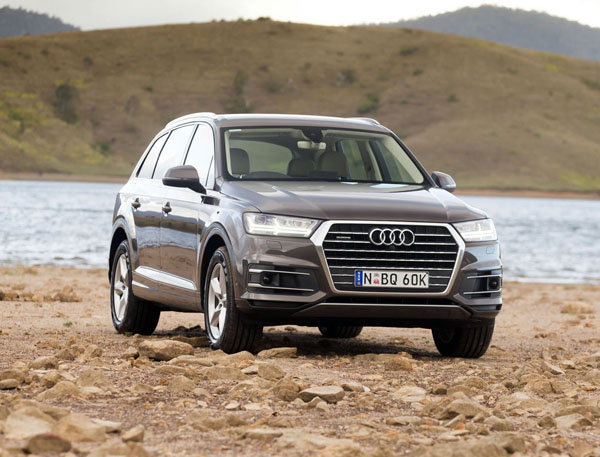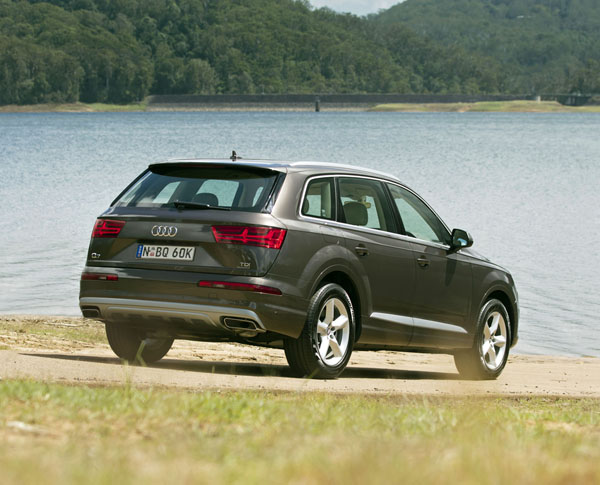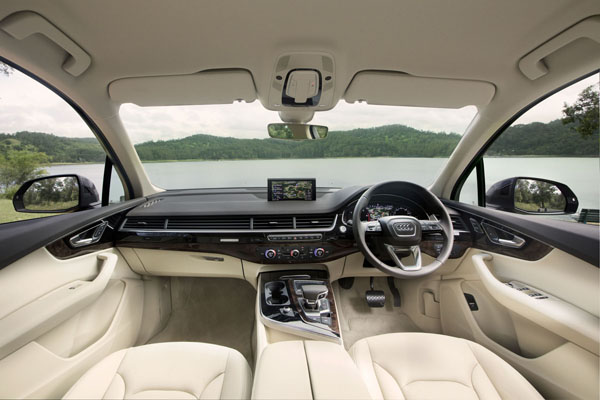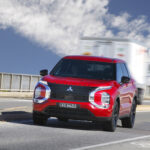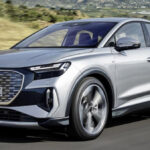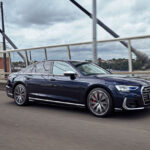Like eager children on a school excursion, members of the Australian motoring media milled around. Then instead of piling onto a motor coach, paired-up ‘pupils’ clambered aboard examples of the new Q7, Audi’s latest addition to the large sports utility vehicle market, and literally rode off into the sunset.
The early evening destination was Spicer’s Canopy, a spiffy campsite near Cunningham’s Gap, inland from the Gold Coast. The following day’s drive consisted of an extended loop north and east, ending up on the Sunshine Coast.
The vehicle in question was the Q7 3.0 TDI 160 kW wagon, a mate to the 200 kW version previously introduced. Ten years after its introduction the large SUV has undergone a series of upgrades to do the company’s best to keep it in the forefront of the premium segment.
Audi engineers have slightly detuned the more powerful motor we reviewed recently, to come up with a new entry-level Q7 – $96,300 as opposed to $103,900 for the 200 kW version. The latest engine has 500 Nm of torque between 1250 and 3000 rpm.
Differences include adjustments to the water pump, oil cooler and combustion method. The result is official fuel consumption of 5.8 litres diesel per 100 kilometres on the combined cycle with carbon dioxide emissions of 150 grams per kilometre. Acceleration from zero to 100 km/h is put at 7.3 seconds.
This compares with 5.9 litres of fuel per 100 kilometres (153 g of CO2) and sprint of 6.5 seconds to the ‘ton’ from its 200 kW twin.
Both models share a drivetrain that is 20 kg lighter than its predecessor, while a new quattro centre differential takes the place of the previous transfer case and is integrated into an eight-speed tiptronic transmission.
The eight-speed consists of close ratios low down for sporty performance and a long ratio up top for low revs and low fuel consumption while cruising. The new tiptronic works in D and S automatic modes, or the driver can intervene by tapping the gearshift on the centre console or the steering wheel-mounted paddles.
The heart of the quattro all-wheel drive system is the self-locking centre differential. Housed with the tiptronic, it distributes power between front and rear axles quickly and efficiently according to driving conditions.
Weight savings also extend to the new five-link suspension front and back. An adaptive air suspension and all-wheel steering are options.
Off-road going is made easier with hill descent control standard across the range.
While total weight loss of the new seven-seat Q7 over its predecessor adds up to some 240 kilograms – unladen it’s 2060 kg – it is smaller on the outside, yet bigger on the inside.
The new Q7 also sets the standard in presenting information and entertainment, as well as connectivity with the outside through a second-generation modular infotainment platform and Audi’s ‘virtual cockpit’.
Owners have the choice of two sound systems by either Bose or Bang & Olufsen.
Convenience extends to loading luggage through the rear with a kick gesture operated tailgate.
The new Audi Q7’s driver assistance systems include adaptive cruise control with traffic jam assist, active lane assist, autonomous emergency braking, collision and turn assist, plus rear cross-traffic assist.
A parking assist package offers a 360 degree top-view camera and park assist. The vehicles driven on launch featured all this technology also adding LED headlights, full body paint finish and exclusive, all of which punted the price to $111,095, plus on-roads.
Climbing into the cabin, occupants are greeted by a luxurious environment, while he driver is presented with a range of controls and instruments that soon become second nature in operation.
Being a full seven-seater the new Q7 does suffer the inherent problem of limited luggage space with all seats taken.
On the outside, the new Q7 seems squatter than before, with its characteristic Audi single-frame grill dominating the front. The lighting combination – optional LED and Matrix LED headlights – daytime running lights take on an arrow formation.
Side-on bold wheel arches emphasise the twin five-spoke wheels, while the shoulder line extends to the D-pillars and wraparound tailgate.
The launch drive took place on mainly suburban streets with stop/start traffic, and extended highway runs with a few hinterland twists and turns thrown in. Needless to say, the Q7 lived up to the finest features of a versatile SUV with everything there to appeal to the luxury traveller.
AT A GLANCE
MODEL LINE-UP
Audi Q7 3.0 TDI quattro tiptronic 160 kW $96,300
Audi Connect $750
Metallic paint $2400
Assistance package with adaptive cruise control, active lane assist, Audi pre-sense front with autonomous emergency braking, traffic jam assist, collision assist and turn assist $4075
Parking assistance package with 360 degree camera (top view) and park assist $1300
LED headlights $2800
Full body paint finish $1300
Inlays; brushed aluminium, Sono / Oak grey $2170
As tested $111,095
Audi Q7 3.0 TDI quattro tiptronic 200 kW $103,900
Note: These prices do not include government or dealer delivery charges. Contact your local Audi dealer for drive-away prices.




